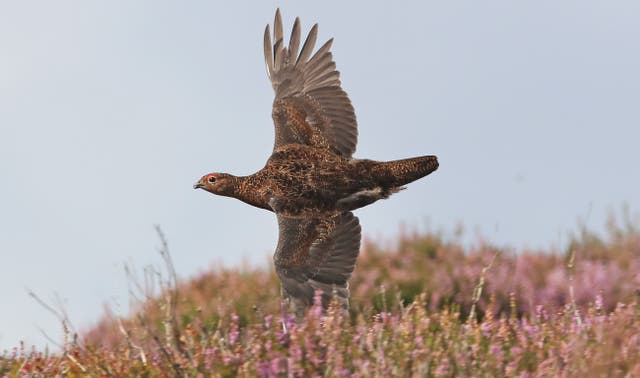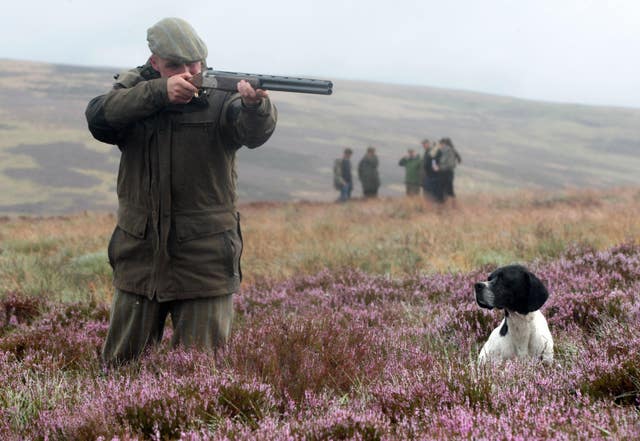
Campaigners are calling for at least 10% of Britain’s national parks to be rewilded after research revealed more than 750,000 acres are taken up by intensively managed grouse moors.
Research conducted by the conservation charity, Rewilding Britain, found that 842,000 acres – an area more than twice the size of Greater London – of protected land are used for driven, red grouse shooting.
It found that among the six national parks in Scotland and northern England that contain grouse moors, a third of their combined land area is devoted to driven grouse shoots.
The annual grouse shooting season traditionally commences on August 12, and driven shooting – which only occurs in the UK – sees rows of “beaters” flush out the birds for participants to aim at.
Driven grouse moors are controversial because the heather is usually regularly burned to produce fresh shoots for young grouse to eat.
Various studies suggest moorland fires can damage underlying peat soils, a vital carbon sink for the UK, releasing greenhouse gases.
The process also has a negative impact on biodiversity by suppressing growth of trees and other vegetation, Rewilding Britain said, and kills off swathes of wildlife, particularly insects.

Conservationists also suspect grouse moor managers of the illegal persecution of birds of prey such as the killing of goshawks, hen harriers and eagles to protect grouse chicks to maximise profits.
Rewilding Britain says the trapping of stoats, foxes and mountain hares is also used to keep grouse numbers artificially high.
According to the charity’s research, 44% of the Cairngorms National Park is made up of driven grouse moors, along with 28% of the North Yorkshire Moors and a quarter of the Yorkshire Dales.
It found driven grouse moors cover 21% of the Peak District, 15% of Northumberland National Park and 2% of the Lake District.

Now Rewilding Britain wants to see driven grouse shooting phased out in national parks.
It wants a tenth of the parks’ land to be designated “core” rewilding areas, with nature recovery goals set across a further 50%.
It said such a move would allow parks to be an integral part of the Government’s commitment to protect 30% of UK land and sea by 2030 to reverse biodiversity loss.
The UK was ranked 189th out of 218 countries for nature according to a 2016 study of pool data from more than 50 nature conservation and research organisations.
About 56% native species were found to be in decline and 15% threatened with extinction.
According to Rewilding Britain’s analysis, the Government can rewild 10% of the parks regardless of action by private landowners, as public bodies, including water companies, own 13%.
It found 738,000 acres of the 5.7m acres covered by Britain’s 15 national parks were publicly controlled.
The process of rewilding can also dramatically boost job creation in rural areas, Rewilding Britain said.
Analysis by the charity of 23 large-scale rewilding sites, including some former driven grouse moors, have shown an 47% increase in jobs overall as a result of the process.
Rewilding Britain’s policy and campaigns coordinator, Guy Shrubsole, said: “The Prime Minister’s pledge to protect 30% of Britain’s land for nature – and count national parks towards this total – rings hollow when you realise that vast areas of our national parks are dominated by these nature-impoverished and heavily-managed areas.”
He added: “Britain’s nature would be in an even worse state were it not for the national parks, which have protected their landscapes from urbanisation and done a lot for conservation.
“But with the nature and climate crises outpacing us, the parks’ wildlife and habitats are badly depleted. We need bold action for nature recovery to match the scale of the threats.”
The Moorland Association, which represents owners and managers of 860,000 acres of moorland in England and Wales managed for red grouse, strongly disputed the findings.
Amanda Anderson, director of the association, said: “There is a barrage of evidence produced by eminent scientists which has been presented to Government which shows that controlled, cool, winter burning, in the right place for the right reason can actually be helpful to the diversification of vegetation and helps prevent catastrophic wildfires – the biggest threat to moorland.”
She added: “Grouse moor managers are wholly committed to their considerable conservation efforts which help protect and enhance the natural world – an ambition we all share.
“There are significant, scientific examples in the UK which demonstrate what happens when moorland management for the wild red grouse is removed.
“The specialist moorland bird populations decline dramatically driven by growth of scrub vegetation unsuitable for nesting and increases in nest failures due to predators.”
According to the Moorland Association, its members have planted 1,275 hectares on moorland fringe areas in recent years, and grouse moor managers have achieved 60% of their peatland restoration targets set for 2025.
A spokesman for the Department for Environment, Food and Rural Affairs, said: “We have set ambitious goals for nature and biodiversity in England in our 25-Year Environment Plan, and our Green Recovery Challenge Fund will provide funding for rewilding projects and communities across the country.
“We support the creation and enhancement of wilder landscapes as part of our broader approach to nature recovery, and will continue to back projects which offer both environmental and economic benefits for our communities.”


Comments: Our rules
We want our comments to be a lively and valuable part of our community - a place where readers can debate and engage with the most important local issues. The ability to comment on our stories is a privilege, not a right, however, and that privilege may be withdrawn if it is abused or misused.
Please report any comments that break our rules.
Read the rules here